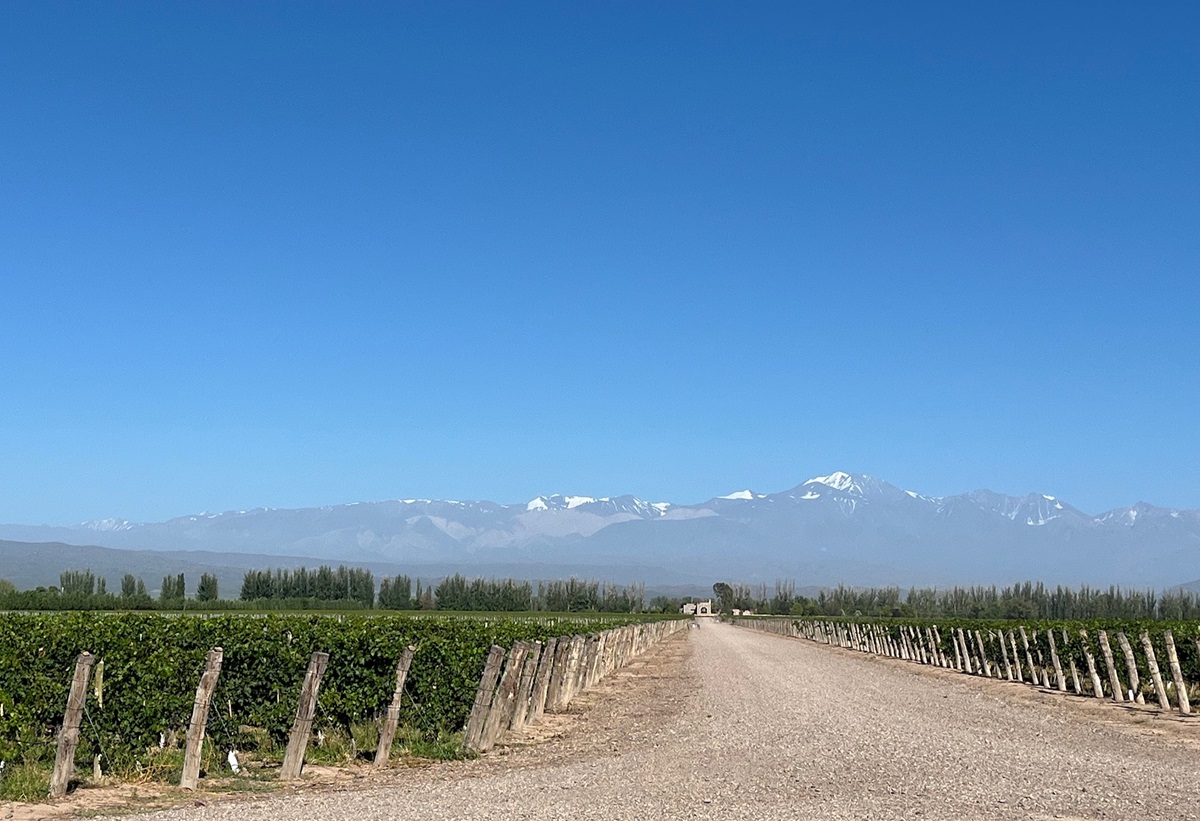ALBARINO’S HOMELAND: RIAS BAIXAS
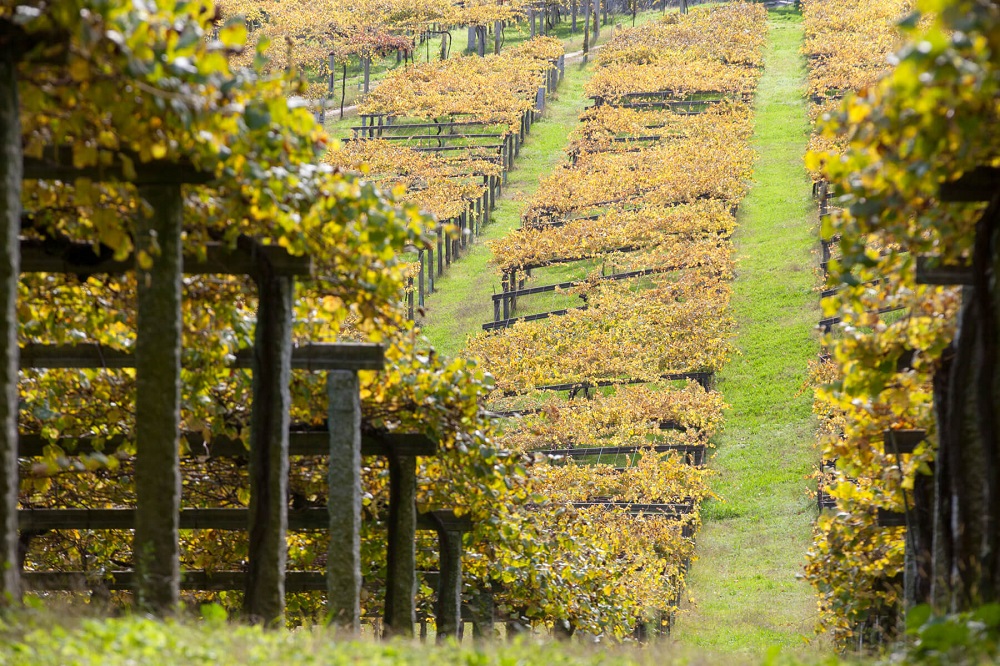
The Albarino grape has been one of the big white wine success stories of the last decade with UK sales from Galicia in northern Spain almost doubling since 2015.
Now that its zippy freshness and rich textures are becoming so popular around the world, the homeland and origin of the grape in Rias Baixas in North West Spain is keen to send a message to the world that the Albarino craze all began with them.
One of the main challenges, which I believe is the reason why people do not know the region that well, is that Rias Baixas is a tricky name to pronounce: ‘Ree-ass-Bye-Shuss’ – whereas the grape name Albarino is so much easier. The name Rias Baixas refers to the ‘little estuaries’ just north of the Portuguese border with Spain, distinguishing itself from the larger estuaries further up the Altantic coast.
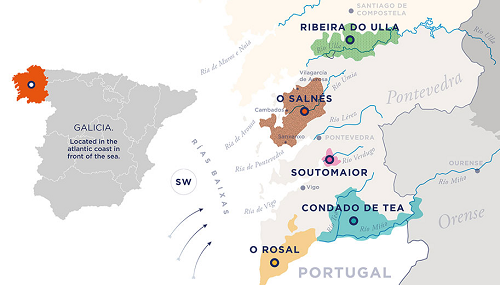
Another reason why the region is less well known is that there are 5,000 vine growers working 20,000 individual vineyard plots across 4,329 hectares – with 179 wineries buying grapes from the growers. This is a phenomenal number of growers considering the size of the area, making Rias Baixas highly fragmented and a challenge for investors in the region. It is also interesting to compare this figure to Burgundy, the region we usually think of as being so fragmented, which has a similar 5,000 growers spread across 30,000 hectares.
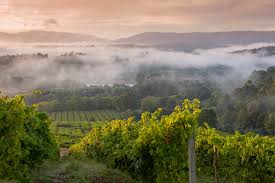
In this stunning part of green Spain, summer temperatures are at least ten degrees cooler than central Spain around Madrid, which is one of the reasons why Rias Baixas can produce such vivid fresh unoaked white wines. With ample rainfall of 33 mm each year and the region’s ancient granitic soils – Rias Baixas is also able to produce very characterful minerally styles of Albarino.
Rias Baixas are keen to show they are not just a one-trick region. They have great diversity amongst their subregions – and they also grow other white grapes. Albarino makes us 95% of vineyard plantings, but Treixadura, Loureiro, Godello and Caino Blanco are used in blends alongside Albarino – and there are even red grapes Mencia, Souson and Tempranillo.
The best-known and coolest subzone is coastal Salnes, the largest with 60% of plantings and the most historic. Albarinos here almost taste of the sea with zesty tangy marine notes and a saline edge, as vines are grown just metres away from the Atlantic benefitting from the cool sea breezes.
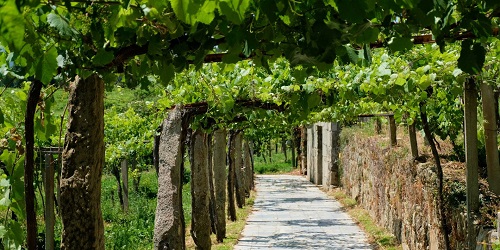
Rosal is the best known of the other subregions. It faces the sea and runs along the Minho valley just north of the Spanish/Portuguese border – and is known for Albarinos with more richness and floral aromas, with some blending with Loureiro and Caino Blanco.
Inland from Rosal is the second largest subzone Condado de Tea with warmer temperatures, granite and slate soils where Albarino is often blended with Treixadura creating weightier richer styles. The smallest and least known subzone is Soutomaior with just 30 growers is rarely seen outside the region.
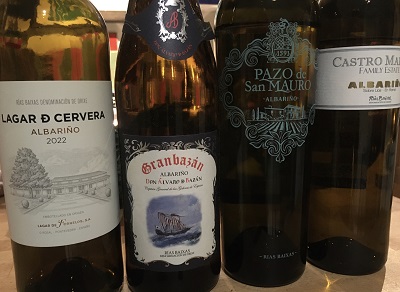
ALBARINO TASTE TEST
Salnes: TERRA DE ASOREI ALBARINO CRIANZA ‘SOBRE LIAS’ 2021
£14.99 De Burgh Wines
This stood out in a line-up of 50 Albarinos that I tasted at a recent trade wine fair in Germany, so I was delighted to see it is available at a local Scottish merchant. Citric, herby, peachy with salty undertones; a good example of unoaked Albarino.
Salnes: CASTRO MARTIN ALBARINO 2021
£16 Fine Wine Musselburgh
Castro Martin use more lees ageing and release their Albarinos a little later to enhance the richness; this has a touch of minerality with leesy creamy palate and salty edge. The owner & winemaker is married to an Englishman. A popular wine with our tasters.
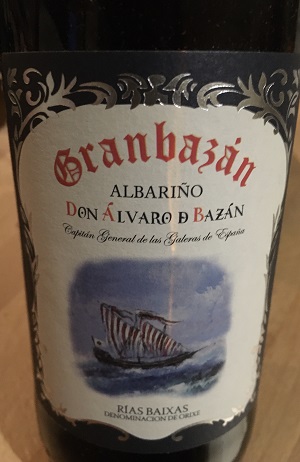
Salnes: AGRO DE BAZAN GRANBAZAN ALBARINO 2019 **STAR BUY**
£27 All About Wine
We don’t often get the chance to taste Albarino with bottle maturity; rich honeyed peachy palate, fleshy fruits and a light spice to finish. Very good.
Condado de Tea: PAZO DE SAN MAURO ALBARINO 2021
£19 The Good Spirits Co, Glasgow
Initially lean, tight and steely, but once aerated this Albarino opened up to be much more honeyed and attractive with good length.
Rosal: TURONIA ALBARINO 2021
£17.50 Vinissimus
Made by Quinta de Couselo, a peachy floral bouquet with fresh vivid minerally notes – very attractive example from Rosal subzone.
Rosal: TERRAS GAUDA ALBARINO ‘O ROSAL’ 2021
£20 L’Art du Vin
Blend of 70% Albarino with 20% Caino Blanco grow at lower altitude and 10% Loureiro grown higher up the schist slatey slopes to add freshness to their soft rounded creamy textured slightly herby unoaked dry white.
Rosal: LAGAR DE CERVERA ALBARINO 2022
£14.99 Waitrose
The lightest and freshest in our tasting – the only one from 2022 vintage; zippy fresh unoaked Albarino – but lacking in character and depth.
Rosal: DAVILA M100 2017 **STAR BUY**
£26 Vinissimus
For anyone interested in tasting a barrel fermented blend of Albarino with Loureiro and Caino Blanco; with three months lees ageing in oak with batonnage lees stirring – this is a superbly rich savoury example showing another face of Rias Baixas.
By Rose Murray Brown MW. Published in The Scotsman 8 April 2023
Join Rose’s Fine Wine Dinner at Prestonfield House Hotel in Edinburgh on Thursday 18 May www.rosemurraybrown.com
wine tastings
The perfect gift for the wine enthusiast in the family. Rose does In-person tastings too.
cellar advice
Rose does cellar valuations for private clients, valuations for insurers & bespoke portfolio management.
Related stories
March 31, 2024
By Rose Murray Brown MW Published in The Scotsman 30 March 2024 On 2 February 1659, the first wine made from grapes grown in South Africa was crafted by the Governor of the Cape, Jan van Riebeeck. He had planted vines four years earlier in the Company’s Garden near Cape Town from cuttings imported from France. Van Riebeeck’s first
March 24, 2024
By Rose Murray Brown MW Published in The Scotsman 16 March 2024 Heatwaves and bushfires were very much on the agenda when I visited Chile last month as winemakers prepared for their 2024 harvest in blistering heat and drought, with a plume of smoke from the devastating fires lingering over coastal hills. Heat and drought are the greatest challenges
March 23, 2024
By Rose Murray Brown MW Published in The Scotsman 9 March 2024 I have two glasses of Malbec in my hands from the same high-altitude vineyard in Uco valley in Argentina. I am in the Catena Institute of Wine in Mendoza with winemaker Agustin Silva. He has asked me to taste the two wines, both from the 1500m high



